Understanding Astigmatism & Myopia
Our eyes are unique. Like snowflakes or fingerprints, our eyes have individual shapes and sizes. However, most eyes have a lot in common, as there are features essential for functioning vision and eye health. But occasionally, some of these differences can change how our eyes work.
Astigmatism and myopia are examples of unique eyes impacting vision. When the eye conditions are detected early through an eye exam, an optometrist can help you manage or improve your vision.
There are many options for correcting vision, including eyeglasses, contacts lenses, and laser eye surgery. What you need for comfortable vision begins with understanding how your eyes change your visual ability.
Understanding Refractive Errors
A refractive error describes eye conditions caused by irregular eye shape. Each part of your eye has a unique purpose. When the shape is atypical, it changes the function, affecting vision or eye health.
Refractive errors are vision problems related to how your eyes refract or reflect light. Light is essential to our vision, and it travels and is interpreted through multiple parts of the eye. The first step on light’s long journey through our eyes begins with the outer layer, the cornea. When there is an error in how light moves through the outer layer, it’s called a refractive error.
What Is Astigmatism?
Astigmatism is a unique refractive error because it can cause near and distant vision problems. The eye condition occurs when the lens or cornea has an irregular or cylindrical shape.
Many people have minor astigmatism because a perfectly round eye shape is uncommon. When the condition is minor, you may never notice. However, those with moderate to highly astigmatic eyes will likely experience symptoms and require methods for vision support.
In addition to blurry distance or near vision, symptoms of astigmatism include:
- Headaches
- Eyestrain
- Eye irritation
- Difficulty with night vision
- Squinting (to focus vision)
What Is Myopia?
Myopia or nearsightedness is caused by a too-long eyeball shape or a cornea with too much curvature, resembling a football more than a basketball. The eye condition begins in childhood, typically presenting before individuals reach their early 20s.
People with myopia experience blurry distance vision. Their near vision is not affected. Some people with low myopia may only wear corrective lenses for distance-based activities, such as driving. Those with higher myopia may need to wear corrective lenses more consistently.
Currently, myopia affects 30% of Canadians. However, myopia is expected to increase to include 52% of the world’s population by 2050. As the eye condition gains prevalence worldwide, many optometry practices offer methods for myopia control. In addition, managing myopia in childhood can reduce the risk of worsening symptoms and help improve lifelong visual quality.
As astigmatism can also occur alongside myopia, they share similar symptoms. Without management options, people with myopia experience:
- Headaches
- Eyestrain
- Squinting (to see distances)
- Blurry distance vision
However, more severe forms of moderate to high myopia can significantly impact vision and eye health.
Degenerative Myopia
One form of high myopia is degenerative myopia, where the eye condition progressively worsens. Degenerative myopia can develop at any age but presents most frequently between ages 30–40.
Degenerative myopia or pathologic myopia affects 3% of the global population. As a higher level of myopia, it can increase the risk of developing additional ocular conditions, such as:
Ocular conditions related to degenerative myopia can cause vision loss or decreased visual quality.
Differences Review
Astigmatism and myopia have many similarities, as they are both refractive errors. However, although both can affect distance vision, the conditions are distinct vision problems. Here’s a review of the differences side-by-side.
Shape
Astigmatism occurs when your eye’s lens or front surface is irregular or cylindrical. Myopia occurs when the whole eyeball is too long, or the cornea is too steeply curved.
Vision Problems
Both refraction errors can cause blurry distance vision, but astigmatism may also cause blurry near vision.
Degenerative myopia can cause other ocular conditions to develop, such as retinal problems which impact central vision.
Rarity
Astigmatism is the most common type of refractive error. However, astigmatism commonly occurs in a minor form, which may not exhibit symptoms.
Although myopia can be minor, it can also progress (degenerative myopia) and is now more prevalent. Today, vision changes caused by myopia occur earlier in childhood and continue later into adulthood.
Severity
Astigmatism and myopia can affect individuals differently depending on whether the condition is minor or severe. However, high myopia can include more significant vision and eye health risks.
Improve Visual Comfort with Expert Care
Understanding the similarities and differences between refractive errors can be challenging without expert guidance. If you’re experiencing symptoms or vision changes, contact our team at IndividualEyes. We can assess your eye health to understand your sight better.After getting to know you, we can recommend options to manage your visual comfort. Book an appointment to learn more about your unique eyes.



